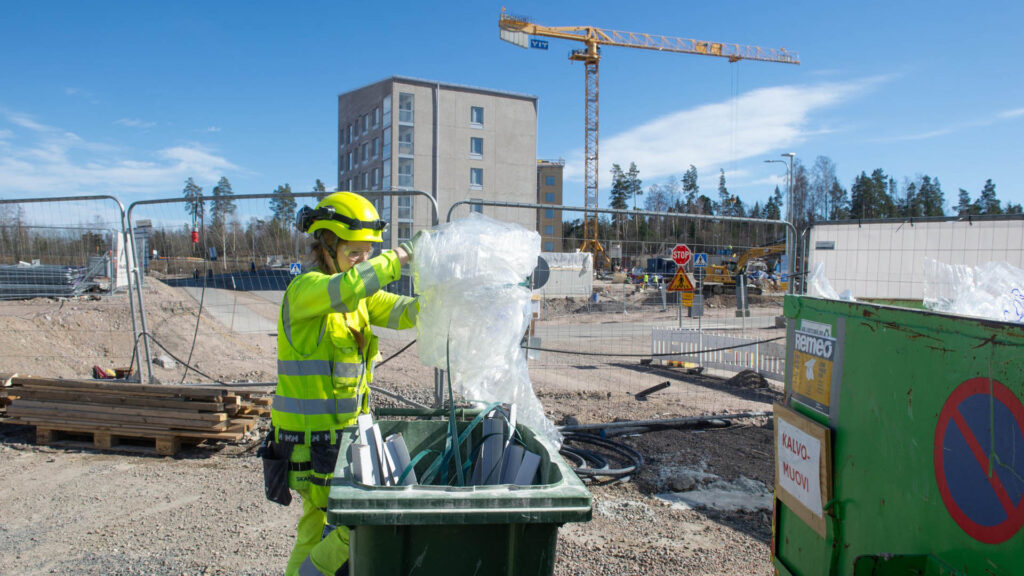The Plastic Film Calculator, developed at Aalto University, is now available on the rt.fi website. The calculator allows you to estimate the amount of plastic film waste generated in a new apartment building project. The only input data required is the gross floor area and the number of apartments. Based on this information, the calculator provides estimates of the distribution of plastic film waste by work phase.

“Since plastic film waste is generated from packaging and protection, it is easy to understand that the interior phase is the work phase in projects that generates the largest amount of plastic film waste,” says the Standardization Manager at the Finnish Construction Products Industry (RTT). Wind Municipality.
According to the calculator, for example, a project with a gross area of 5 square meters and 000 apartments generates a total of approximately 70 kilograms of plastic film. Almost 1% of this is generated by internal construction work. The share of the frame and roof is approximately 750%, and plumbing and electrical work is 60%. Less than 20% of plastic film waste is generated during the completion phase. The share of foundations and subfloors is less than 13%.
From an environmental perspective, separate collection of plastic film is worthwhile if more than 21 kilograms of it is collected.
“In our example site, more than 80 times the amount of plastic film is generated. Sometimes there are challenges in placing collection containers and there is no suitable space on the site for a separate plastic film pallet or press for the entire duration of the project. In this case, it is desirable to collect plastic film separately at least during the internal phase. Waste management operators offer different collection tools and emptying intervals,” says Kunnas.
Plastic wrap is light, so even relatively large quantities can be easily moved by hand from the floors out into the yard. At its simplest, plastic wrap can be collected separately in a pile, i.e. on the floor next to the work station indoors, from where it is taken to a pallet or container in the yard.
“Choose a collection location with the occupational safety of everyone working on the site in mind. It is also important to remember that the exact same collection solutions are usually not optimal throughout the entire site,” Kunnas reminds.

Tuuli Kunnas
Standardization manager, product manager
tuuli.kunnas@rt.fi + 358 40 172 0073Rakennustuoteollisuus RTT ry